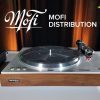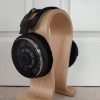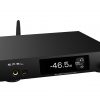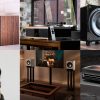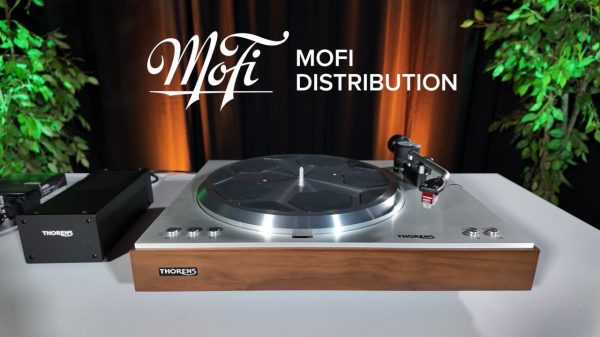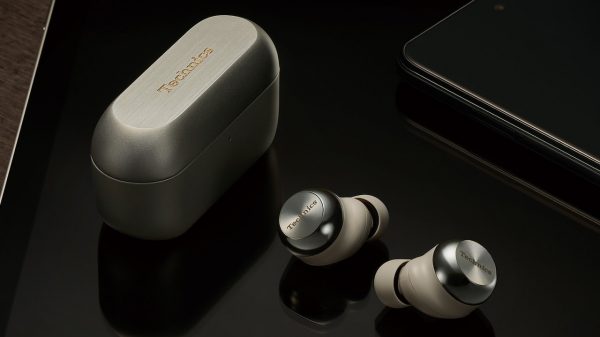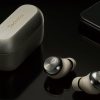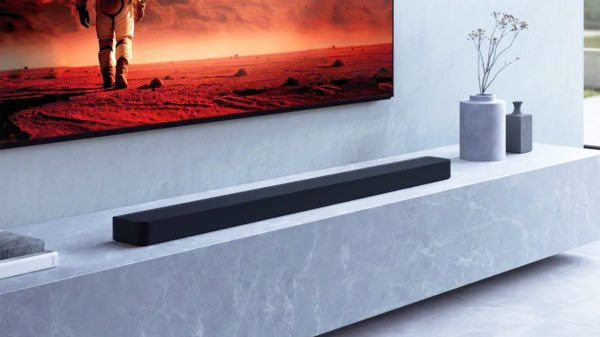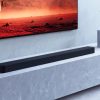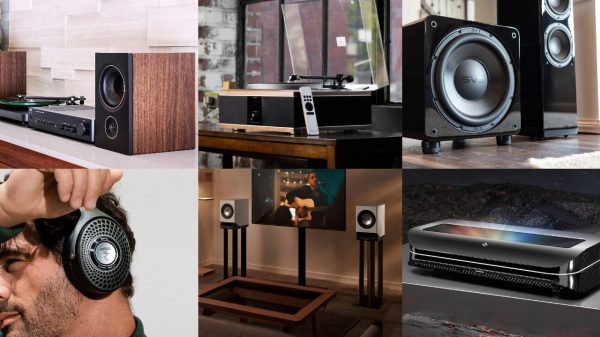After 18 consecutive years of vinyl sales growth, it’s no longer a trend—it’s a reckoning. But that still leaves one very pointed question: does it make sense to buy a vintage turntable today? Is it nostalgia wrapped in wood veneer, or a smarter path to real analog sound?
Records offer a different kind of listening experience—one that can’t be replicated by CDs, downloads, or streaming services. But where you drop that needle matters. Should you buy something new and sleek with a built-in phono stage and Bluetooth, or track down a vintage belt-drive beauty that weighs more than your current integrated amp?
The answer? It’s not so simple. Some vintage turntables were built like tanks and tuned like instruments. Many still go toe-to-toe with new models in the same price range—and some absolutely crush them in long-term reliability and sound quality. Others? Overpriced projects in need of TLC, or just flat-out not worth your time.
Let’s break it down.

Some of us still think reading a novel on a Kindle or Nook is like drinking pinotage out of a paper cup—technically it works, but where’s the soul in that? Holding a real book, turning actual pages, getting lost in the weight of a story—that’s the experience. That’s the point.
Nobody’s saying don’t read digitally. Read however you want. But be honest—have you ever met someone curating a wall of eReaders to show off their “collection”? Didn’t think so.
There’s nothing like walking into a room lined with shelves, the smell of old paper and ink hanging in the air. It tells you something. It says the stories mattered enough to keep.

These days, if you want a high-performance turntable, the market’s never been richer—remarkable considering billions are streaming tunes daily on Spotify, TIDAL, Qobuz, and Apple Music.
So here’s the million-dollar question: with so many new turntables on the shelf, why would anyone even glance at a used vintage deck?
Do vintage tables really deliver a better sound than modern players under $2,000?
No doubt, some vintage turntables are built like tanks—solid, reliable machines with a pedigree. But that kind of quality often comes with a catch: if repairs or parts swaps are needed, the price tag can quickly climb. The question isn’t just what sounds better, but what’s worth your time and money.
Vintage turntables have become extremely popular during this new golden age of vinyl, but we are not entirely convinced that consumers looking for a vintage turntable really understand what that entails.
“Vintage” gets used a lot as a marketing term to attract a certain type of customer — but don’t confuse that attempt to sell you something with reality.

Not every vintage turntable deserves a second glance. Sure, we could have tossed in legends like the Linn Sondek LP12, Michell Gyrodeck, Roksan Xerxes, Oracle Delphi, Well Tempered Lab, SOTA Sapphire, or even an older Lenco or Garrard. But we kept the list under $2,000—because that “quality” we keep talking about doesn’t come cheap.
Gulp. Reality check: vintage build quality demands an investment.
We picked these turntables because their brands are still alive and kicking, parts are available, and reputable shops can restore them properly. When set up right, they sound phenomenal.
We wouldn’t be recommending any of these if we hadn’t lived with them or currently owned them.
Fair warning: suspended turntables can be sensitive to footfalls and vibrations—meaning you need a rock-solid, inert stand or maybe even a wall-mounted shelf. Yeah, looking at you, Thorens.
Another issue with vintage turntables involves the availability of replacement tonearms if the original model needs to be replaced; SME stopped selling its tonearms to the general public before reconsidering in 2023 — the M2 series is now available again but with a rather considerable uptick in price. The tonearm now costs more than any of the tables on our list.
Rega, Michell, Sorane, and Origin Live arms can work on Thorens tables but they require careful set-up.
Our Favorites
Thorens TD-125

One of the most iconic belt-driven vintage turntables of the 1970s, the Thorens TD-125 is in serious demand in 2024. Companies like Vinyl Nirvana now offer custom restorations of this deck with specific tonearms and cartridge options.
Thorens moved over 100,000 TD-125s in 1975 alone—yeah, you read that right. That means there’s no shortage of these beasts or spare parts clogging up basements and attics worldwide.
What set the TD-125 apart wasn’t just its looks—it was the electronic speed control, a game-changer back when pitch stability was a luxury feature. High-end buyers demanded it, and it delivered a rock-steady platform for just about any tonearm you could throw at it. Originally it came with its own tonearm, but the smart money quickly swapped those out for SME arms—their performance wasn’t even close.
It’s a hefty suspended design with a 7-pound platter built like a tank and meant to last longer than most marriages these days.
The TD-125 is a turntable you can tinker with, mod, and bring back from the dead without needing a PhD. Audiophiles who worship its speed stability and warm tone swear by it. Sure, it won’t dig quite as deep in the bass as some modern competitors, but paired with cartridges like the Ortofon 2M Black, Denon DL-103, or Dynavector low-output moving coils, it still plays a very convincing hand.
Bottom line: It’s a classic for a reason, not just a dusty relic.
That suspended design? It definitely demands proper isolation—no slapping it down on your flimsy IKEA coffee table and calling it a day. We’re talking a heavy-duty equipment rack or a solid wall-mounted turntable shelf if you want to hear what that TD-125 is really capable of.
I’m three tables deep with Vinyl Nirvana over the past decade, and trust me—nobody beats them for customer service or setup advice. They’ll keep your vintage investment sounding sharp and trouble-free.
Pros:
- Built like a tank
- 100,000+ in circulation making it easier to find spare parts
- Reliable
- Excellent sound quality
- Can be restored to almost new condition with greater tonearm options
Cons:
- Popularity has made samples in good condition more expensive
- New and used parts are not available from Thorens requiring 3rd party sources
- Suspended design requires isolation
- Restored versions with high-end tonearms and cartridges will cost more than $2,500
VPI HW-19

Forty-four years ago, VPI dropped its first turntable, the HW-19, packing either a Jelco Profile or AudioQuest PT5 tonearm. This beast—heavy, precise, and built like a Sherman tank—spawned the MK II, MK III, and MK IV versions, earning a near-religious cult following worldwide.
Today, VPI is undisputedly America’s premier turntable maker, with a lineup stretching from the entry-level Cliffwood all the way up to the $40,000 Titan, which more than a few audiophiles swear is among the best tables on the planet.
Sure, the HW-19 looks like it’s from another era—nothing like the sleek, hand-crafted marvels coming out of New Jersey today—but it’s got that same VPI DNA: top-tier quality, rock-solid reliability, easy upgrades, and a customer service team that actually answers the phone.
The HW-19 MK III and MK IV are ideal platforms for high-end SME or Jelco tonearms—if you’re lucky enough to spot one used without a ransom note attached. Its stainless steel and acrylic sub-chassis isolates like a champ, and VPI still stocks parts to keep these icons running forever.
The isolated motor offers razor-sharp speed stability, delivering scale, clarity, and midrange punch that makes cheaper tables sound like they’re playing through a tin can. But don’t expect to snag one on the cheap—American-made craftsmanship never is.
Pros:
- VPI offers top notch support for its turntables regardless of age
- Manufacturer has the ability to help you upgrade table over time
- Excellent build quality
- Reliable
- Arm boards for a wide range of tonearms can be acquired from manufacturer
- Excellent sound quality
Cons:
- Used samples in excellent condition can be very expensive
- Limited number in circulation
- Parts can be expensive
- Upgrade options are not inexpensive
- Requires a better quality tonearm and cartridge to be worth the investment
For more information: VPI HW-19 Turntables
Technics SL-1700

The Technics SL-1700, built between 1977 and ’78, is part of a long line of reliable, no-nonsense workhorse turntables. It’s a semi-automatic direct-drive table equipped with a strobe light and speed adjustments to keep playback dead-on accurate. The “S”-shaped tonearm with removable headshell made swapping cartridges painless—a big deal back then and still appreciated today.
What really made the SL-1700 a crowd favorite was its simple setup and straightforward operation. No headaches, no fuss.
Technics’ direct-drive motor delivered excellent speed stability and torque, a legacy they’ve revived with their modern SL-1200GR and SL-1210GR models—both eye-wateringly expensive. The SL-1700 isn’t hard to maintain and back in its day, it was a high-end “entry-level” player that punched above its weight.
Sure, the gray metal-and-plastic base looks like a relic in 2025, but it fits right in with vintage 70s gear. Finding one in decent shape isn’t a treasure hunt, and it’s well worth pairing with a quality cartridge under $300 to get the most out of it.
Pros:
- Tens of thousands of samples in different levels of condition available for sale
- Direct Drive motor delivers excellent speed accuracy and stability
- Technics is back in the market making some of the best tables available
- Parts are easy to find
- Reliable
- Affordable
Cons:
- Might be difficult to find one in excellent condition if they were bought and sold multiple times
- Tonearm might require some adjustment by a professional
- Not a sexy looking deck
- Requires a solid entry-level (over $300) cartridge to really be worth the effort
Yamaha YP-701

Yamaha’s flagship turntable in 1976, the YP-701 (or YP-700 depending on the market), was a belt-drive auto-return beast. Measuring a hefty 480 x 410 x 161mm and tipping the scales at just over 20 pounds, this table wasn’t messing around.
It packs a medium-mass “S” tonearm with a universal plug-in headshell, a heavy die-cast aluminum platter, and double float suspension—meaning the arm and platter are sprung separately from the motor to keep vibrations and motor noise at bay. No signal gets through until the stylus actually lands on the record, so you get zero thud at startup.
The sound? It’s often compared to Thorens models of the era—no coincidence given the similar suspension design. Some cheekily called it the “poor man’s Thorens,” but that’s selling it short.
Thanks to the independently suspended platter, motor, and arm, it’s an exceptionally quiet table. It’s delicate, with a sweet midrange and treble that screams “Japanese engineering,” but the bass can be a little light and lacking in authority. It’s especially well suited for jazz, classical, and acoustic music—anything where detail matters.
Fair warning: installing the belt is a test of patience—you have to remove the motor cover and carefully thread it on. I had a laugh (and a minor existential crisis) with Eric Pye while wrestling with that little challenge.
Months into my Yamaha journey, I’m genuinely impressed. The YP-701 has held its own beautifully with cartridges like the Nagaoka MP-110, Denon DL-103, and Grado Labs Opus3. Yamaha didn’t cut corners on this one.
Pros:
- Solid build quality
- Excellent isolation of the motor, platter, and tonearm
- Open sounding deck that offers excellent clarity, detail, and pacing
- Tonearm has a detachable headshell
- Very quiet deck
- Works well with some of the best budget cartridges around
- Reliable
Cons:
- Wood plinth looks great but finding one without any scratches is difficult
- Not the most authoritative sounding bass range
- Recent popularity has made it more expensive
- Finding used parts can be challenging
- Removable headshell could be better quality
- Fixed interconnect and power cables can’t be removed
Dual 701

Dual produced their first turntable in Germany in the late 1930s. They started selling internationally in the late ‘60s with their 1009 idler wheel table, and the company added belt-drive and direct-drive turntables to the product line in the ‘70s.
Dual’s best-known units are undoubtedly the 1009, 1219 and 1229; all idler drive turntables that had to compete with the more expensive and classic Garrard, Lenco, and Thorens tables of the period. The 701 was their first direct drive unit. Idler drive vintage turntables are coveted for their drive, warm tonal balance, and strong low end performance; they can also be a challenge to maintain due to their complex mechanisms.
The 701 (1973-76) on the other hand is pure simplicity, with its platter sitting directly on top of an innovative, electronic, low speed motor (which rotates at the actual record speed). The motor is so quiet and resonance-free, that it does not require isolation mounting and is secured directly to the chassis; in fact, at the time of its manufacture, it was known to be the “quietest turntable ever made,” as evaluated in independent laboratory tests.
The Dual 701 features a straight tonearm (common on all vintage Duals), shuttle cartridge mounting system, internal grounding (no finicky grounding wire to attach to the amp), a 2.9 kg (6.4 lbs) non-magnetic, dynamically balanced, detachable platter, auto-start and return, stroboscopic pitch control, and a beautiful wood plinth. It has a relatively small footprint at 420 x 362 x 145 mm (16.5 x 14.3 x 5.7 inches) but weighs a hefty 10.9 kg (24 lbs).
The 701 is authoritative and dynamic sounding, with a big, robust tone. The low-end is nice and thick; compare it to any inexpensive turntable made overseas today and you’ll hear the difference. The midrange is warm and fleshed out with good detail retrieval. Treble is pleasing and certainly not lacking, though perhaps outshone by the quality of the lower registers. The slightly forward presentation and excellent sense of pace make it an excellent choice for any genre of music.
Pros:
- Dynamic sounding deck with a lot of tone
- Strong low end performance
- Smaller chassis
- Built like a tank and very heavy
- Direct Drive motor
- Very quiet when in operation
- Solid value for the money
Cons:
- Hard to find one in perfect condition
- Used parts may be expensive
- Tonearm is compatible with a limited number of cartridges
- Somewhat bass heavy presentation
The Bottom Line
Vintage turntables from the ’70s still deliver solid build quality, reliability, and excellent sound—if you pick the right model and put in the work to upgrade and properly set it up. Sure, servicing and parts can be a pain, and some designs need careful isolation or maintenance.
Shipping these old beasts isn’t always a walk in the park—original packaging can be hit or miss, which is why we strongly recommend buying from specialty sellers and restorers like Vinyl Nirvana who go the extra mile to make sure your table arrives bomb-proof. Still, nothing beats getting your hands on a turntable firsthand, so hit up local hi-fi dealers or independent record stores to see what’s on offer before you commit.
Related Reading:
- The Most Significant Turntables of All Time?
- Miniot Wheel 3: The Dutch Turntable That Plays Records From Below —Because Being On Top Is So Last Century
- Thorens Unleashes TD 124 DD Exclusive, TD 404 DD & MC 1600 At High End Munich 2025 — Precision German Audio With A Side Of Sauerkraut
- Best Audiophile Turntables Under $3,500


